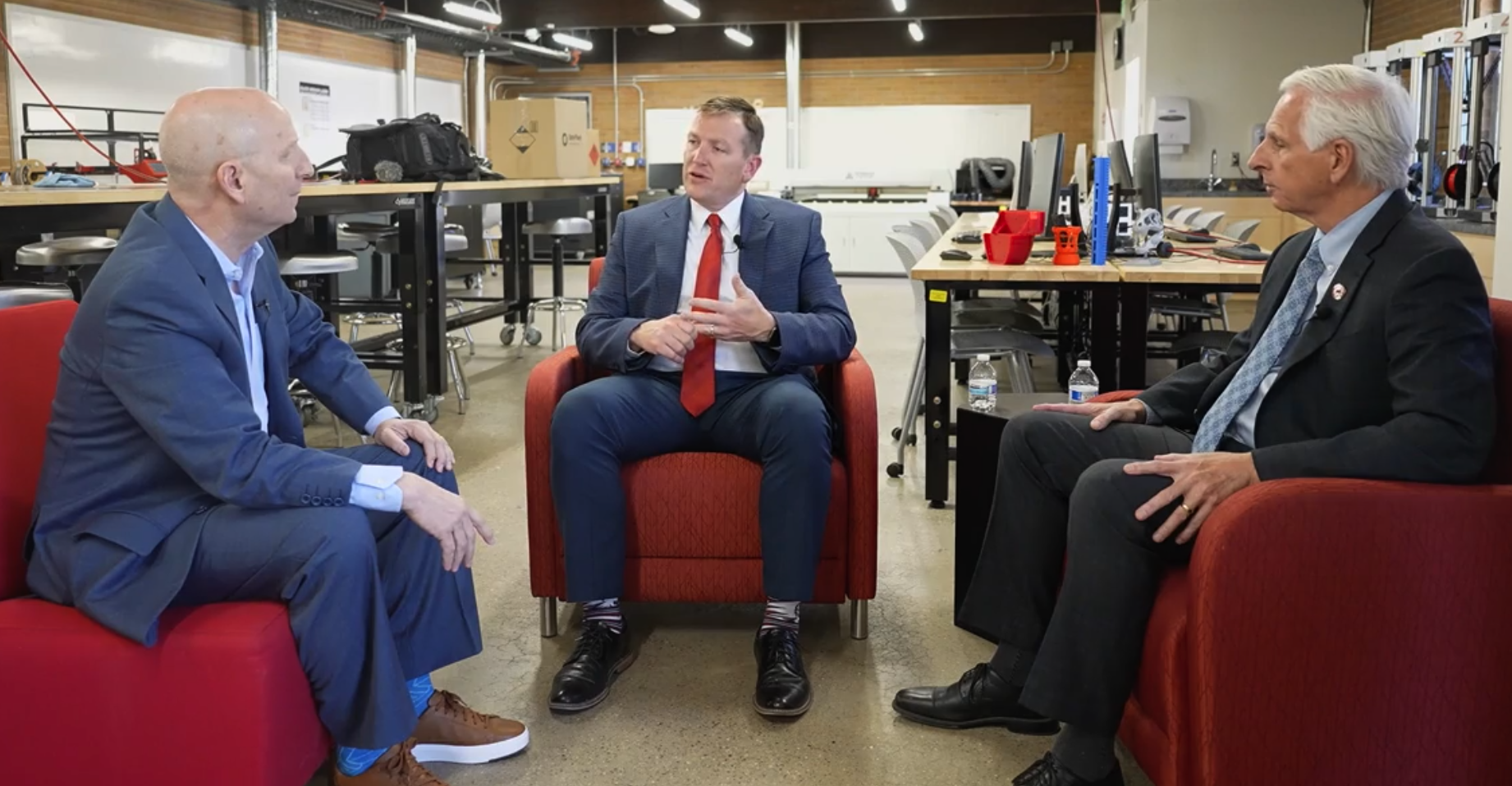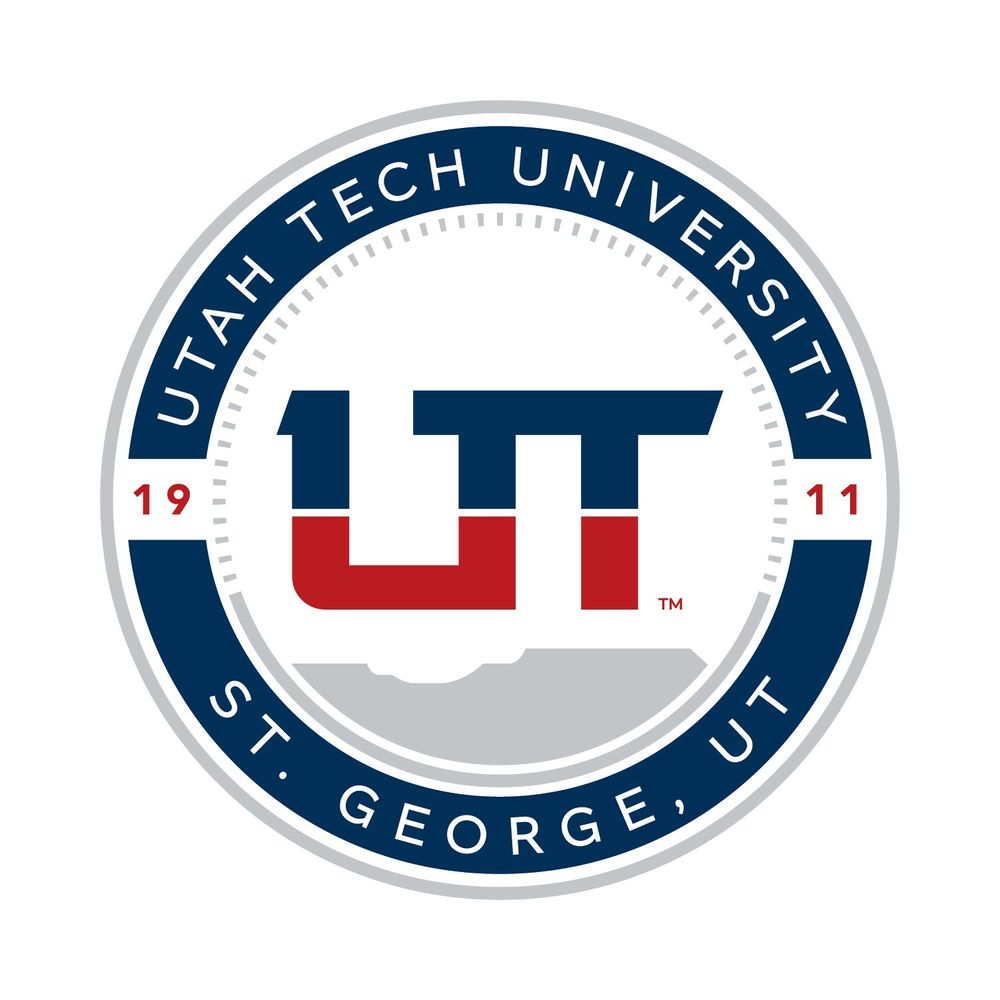Over a century in the making, Utah Tech University gives the state of Silicon Slopes a polytechnic institution of higher-education that is chomping at the bit to set itself apart from the other universities in the state, as well as other tech institutions around the country.
When I think of the top technology-centric universities around the United States, several institutions come to mind right away:
- MIT,
- Caltech,
- Georgia Tech,
- Rensselaer Polytechnic Institute,
- Cal Poly,
- Case Western Reserve, and even the
- Rochester Institute of Technology,
just to name a few.
(And to be clear, that’s not even close to being a fraction of the U.S. universities and colleges worthy of being included on such a list.)
Not surprisingly, a name absent from everyone’s list of top technology universities in America would clearly have been Dixie State University; you know, that sleepy little school down in St. George, Utah, the school often hidden in the shadows cast by the University of Utah, Utah State University, Brigham Young University, and even Utah Valley University.
The only problem with such a perspective is that it’s entirely misguided and woefully out-of-date.
In other words, goodbye Dixie State, and hello Utah Tech University.
The Reimagining, Repurposing, and Rebirth of Dixie State into Utah Tech University
July 1, 2022 was the official date that Utah Tech University formally became the new name and brand of what had been Dixie State University, with the new logo plastered all over campus and in and around St. George, as well as across the Internet and on all marketing and communications materials.

For readers not familiar with its background, Utah Tech was launched just over 110 years ago as St. George Stake Academy in 1911, with the Church of Jesus Christ of Latter-day Saints as its founding sponsor.
Ownership of the school transferred to the state of Utah in 1933 during the height of the Great Depression when the school was known as Dixie College.
The school was a two-year junior college until 2000 when it was renamed Dixie State College and began offering bachelor’s degrees. Then in February 2013 the school transitioned again when it was renamed Dixie State University, with a Master’s program in accountancy launched in fall 2018, its first graduate offering.
However, it was during the latter portion of the twenty-teens, 2015–2019, and the beginning of the twenty-twenties when an increased awareness of racial injustice and inequities began enveloping most sectors of the U.S., awareness that skyrocketed with the very public murder of George Floyd by police officers in Minneapolis in May 2020.
Just two months later university leadership began what became a two-year process of research, evaluation, and experimentation, leading eventually to the recommendation to drop the long-held Dixie moniker from the institution’s name.
During this process, independent research verified that the word Dixie was synonymous with the Confederacy to
- 33% of Southern Utah residents,
- 41% of all Utahns, and
- 64% of respondents from the university’s recruiting region.
{NOTE: The “Dixie State University Name Process” page describes in pretty extensive detail the steps leading up to, and the reasoning behind, the university name change.}

Interestingly enough, although the initial proposal from the Name Recommmendation Committee was Utah Polytechnic University, with a nickname of “Utah Tech,” the name eventually approved by all parties was Utah Tech University.
The Hidden Transformation that Started Close to a Decade Ago
I sheepishly admit that before sitting down a few months back with Dr. Richard Williams, president of the newly named Utah Tech University, I would have sworn that the St. George-based school was home to maybe 5,000 to 6,000 students.
The problem with such an uninformed guesstimation was that it undershot the true total by over 50%, with more than 12,000 students enrolled as of the beginning of this year.
Not only that, but since President Williams took the helm, the number of degrees, certificates, and programs offered at Utah Tech has exploded to over 240 today, with degrees in subjects ranging from
- Accounting to Bioinformatics, and from
- Respiratory Therapy to Technology Innovation.
He ascribes much of that growth to execution upon “Trailblazing Distinction,” which happens to be the name of the university’s strategic plan which was unveiled in 2015, the year after Williams took the helm.
Additionally, President Williams explained the school expects to see explosive population growth in St. George and the surrounding area, growth that will undoubtedly drive growth at Utah Tech itself.
“If you look at the statistics, we should be the size of Pittsburgh (Pennsylvania) in about 14 years. So the university has to match that. Pittsburgh has, I believe, four or five universities. And so I think you're going to see a tremendous transformation. (In fact), we have already transformed into something that people just don't believe.”
According to President Williams, he and his team are focused on identifying hiring and professional needs of organizations and aligning them with the programs they offer to better serve their current and future students.
“We know what the needs are in this community. We know where the workforce shortages are. We know that we're adding programs to meet those workforce shortages. You're going to see us really focus in on what it is that this community needs. What type of workers? What really makes the community thrive? It's innovation and technology.”
What Open Really Means at Utah Tech University
What I found really fascinating in my conversation with President Williams and his Provost/Vice President of Academic Affairs, Michael Lacourse, PhD, was the concept of melding an open enrollment model with a polytechnic educational institution.

Without naming the names here that they shared with me, they explained that at many of the top technology universities across the country, the starting point for admission is a straight A, in other words a 4.0 gradepoint average.
And the tuition and fees required regularly hit tens of thousands of dollars. Per semester.
Plus, it’s an open enrollment system at Utah Tech, which means if you have a high school diploma, or the equivalent, if you want to attend, you just have to apply.
But under President William’s vision, Utah Tech intends to expand the application of the word “open” to mean additional things at southern Utah’s predominant institution of higher education.
“We seek to be the preeminent university that's open, inclusive, comprehensive, and polytechnic. The open is where the university is, ‘Come one, come all.’ But it's more than that. It's open pedagogy. It's open educational resources.
“When you look at inclusion, we have a very strong minority group here on our campus. And being so close to California and Vegas, we want to make sure that every student that steps on our campus will be successful.”
Personally, I have never heard of such an inclusive and potentially inviting educational environment, certainly not in a polytechnic ecosystem.
To me, this was one of the most intriguing outcomes of learning more about Utah Tech University recently, an institution with huge dreams, and I suspect, the perfect captain at the helm and the right crew at his side to help him drive St. George’s educational prospects higher and higher.
Clearly, this is an organization to keep an eye on now and in the future.
AUTHOR'S NOTE: In addition to my interview of President Williams, our CEO and Co-Founder, Clint Betts, also traveled to St. George recently to visit with the Utah Tech president. To watch that discussion, please click here to watch this episode of “Conversations” on SiliconSlopes.tv. Conversely, you can also listen to this interview on your favorite podcast provider at “Silicon Slopes Conversations;” case in point, via this link on Apple podcasts or via most popular podcast platforms.
Thank you.








